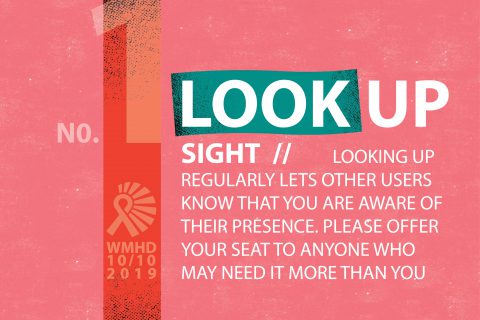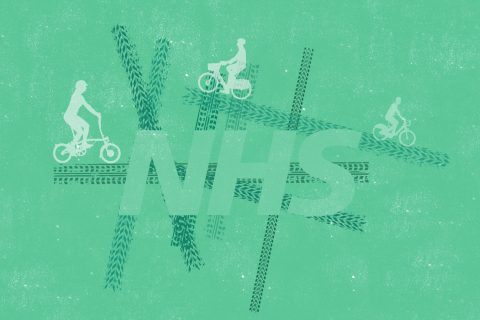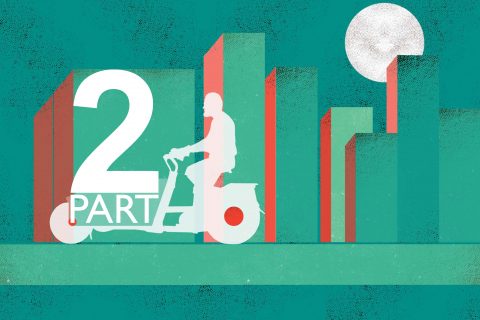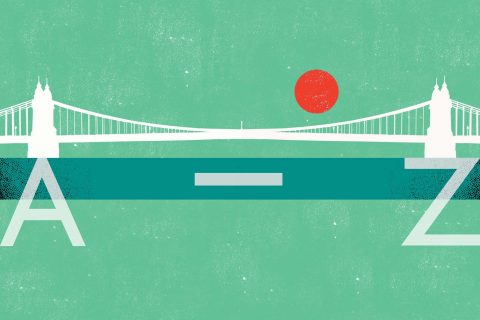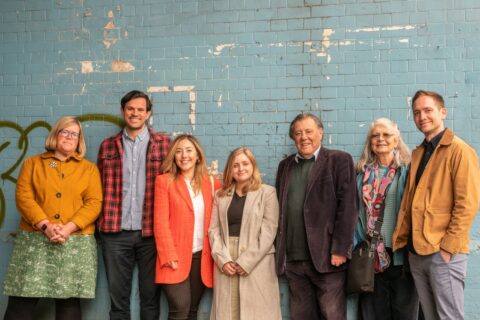Staying strong in unprecedented times

Thursday, 22 September, marks World Car Free Day. In London, celebrations are muted, as the UK capital collects itself from the passing and state funeral of the late Queen Elizabeth II. The ten days preceding the funeral were busy, as swathes of public space were meticulously repurposed and readministered, while the city’s public transport network conveyed thousands of visitors who descended upon London to pay their final respects. The state funeral has highlighted why London needs to continue to invest in public space and sustainable transport. However, it is not solely responsible for this years diminished car free day programme. A range of interdependent factors has stifled the capital’s ability to go car free and effectively denied it the opportunity to build upon the progress of previous years.
London celebrated its first car free day in 2017, and six years later, much has changed. As the pandemic slowly subsides, other global crises are vying for the capital’s attention. The climate crisis has contributed to a long and difficult summer, while the cost-of-living crisis has all the makings of an even tougher winter. London’s mayor, Sadiq Khan, declared a climate emergency in December 2018 and then, following his re-election three years later, pledged to make London carbon neutral by 2030. While smaller UK cities have also pledged 2030 targets, London is unique in being the first global city to do so. Given that a transport mode shift is fundamental to helping London realise its ambitious 2030 target, what has prohibited the mayor from unconditionally supporting the city’s car free day programme, as he did back in 2019?
The timing of the Queen’s passing is significant. Operation London Bridge, the plan enacted following the Queen’s death, had immediate administrative and practical implications for the city’s public realm. These included an increased police presence and the reappropriation of city space in the lead-up to the state funeral. An estimated 750,000 mourners attended the Queen’s lying-in-state, resulting in a queue stretching for nearly five miles along the city’s south bank with wait times of over 24 hours. Restricted access to parts of the city’s Royal Parks, police-controlled road intersections, and the diversion of key cycleways placed additional strain on Transport for London (TfL), which experienced passenger levels reminiscent of the Olympics almost exactly a decade before.
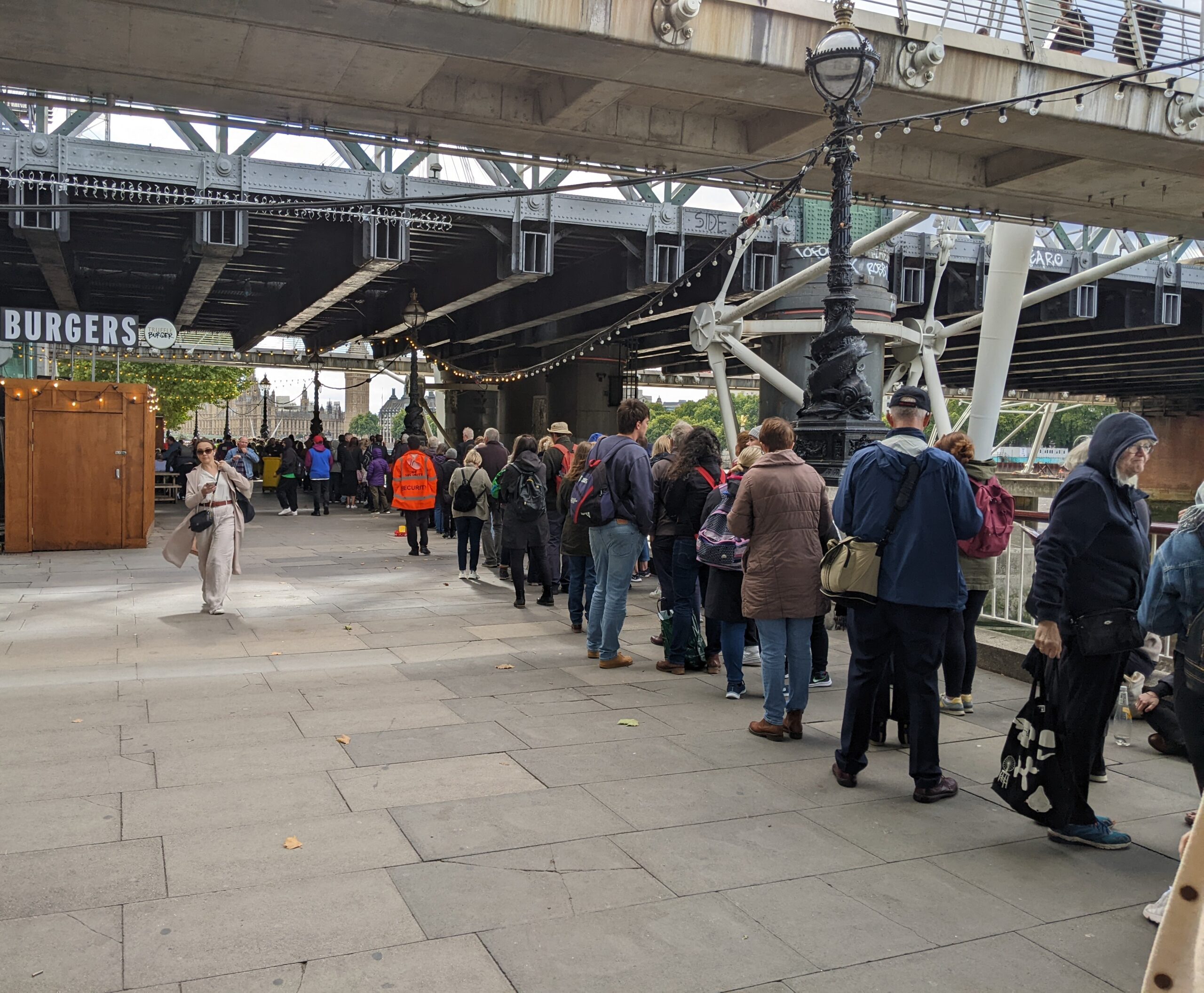
Of perhaps greater significance is the mayor’s stated lack of funding to support a car free day programme. When questioned in May on his plans for a car free day by London Assembly Member, Hina Bokhari, the mayor reported that no decision could be taken owing to the ongoing uncertainty over TfL funding. An answer to a further mayoral question in July revealed that the minimum cost for a car free day campaign to support local events would be £310,000, while a larger-scale event comparable to 2019 would cost between £500,000 and £800,000. Most recently, Bokhari asked whether the mayor would ‘reconsider supporting car free day events’, a week after TfL reached a long-term government settlement on the 30th of August.
The announcement of the Queen’s death on the day after this latest mayoral question effectively postponed further probing as London’s authorities came together to prioritise the state funeral. While the responsibility for implementing a car free day programme does not reside with the mayor alone, as the city’s directly elected leader and chair of TfL, Khan is responsible for setting the tone for the city’s longer-term strategic vision. The mayor can also inspire and cajole other tiers of local governance, such as the London boroughs, and both commercial and community organisations to dedicate time, effort, and finances toward car free day programmes.
Often overlooked is the role the London boroughs can play in facilitating not only car free day events but also a general reduction in levels of car dependence. London boroughs are collectively responsible for 95% of the city’s roads and can effectively determine how road space is both used and charged for, independent of either the mayor or central government. Many boroughs use these powers to deliver car free day events to coincide with road closures, in addition to longer-term measures such as low traffic neighbourhoods, play streets, school streets and parklets. Some boroughs, including Hackney in the east of the city, are delivering ambitious car free day programmes, while another, the London Borough of Hammersmith and Fulham in the west of the city, have postponed the day altogether.

The Queen’s funeral represents the latest in a string of unprecedented events that have impacted London in the last decade, including the 2012 Olympic Games and the 2020 global pandemic. Each of these events disrupted the rhythms of city life, recalibrated critical infrastructures, and showed that successful cities need high-quality public space, robust public transport, and the tools and intent to innovate if they are to thrive. London’s annual car free day represents a unique opportunity to bring together all three, by combining a platform for the trialling of new ideas with the continuity of building upon lessons learnt for better results next time around.
Cities must always strive to realise ‘further experimentation’ through initiatives such as car free days by aiming to increase levels of funding, ambition, and public engagement. Doing so will better prepare cities to deal with adversity and enable them to prosper in the face of unprecedented events. A failure to do so commonly results in ‘forced experimentation’, a by-product of political expedience and short-termism that adversely impacts city users, as was seen repeatedly during the UK-wide lockdowns. With the climate and cost-of-living crises converging, these unprecedented times are only likely to lead to an increasing number of unprecedented events. It is therefore crucial that London continues to invest in both car free days and larger initiatives, if it is to not only meet its climate targets but also equip itself for the challenges that lie ahead.


